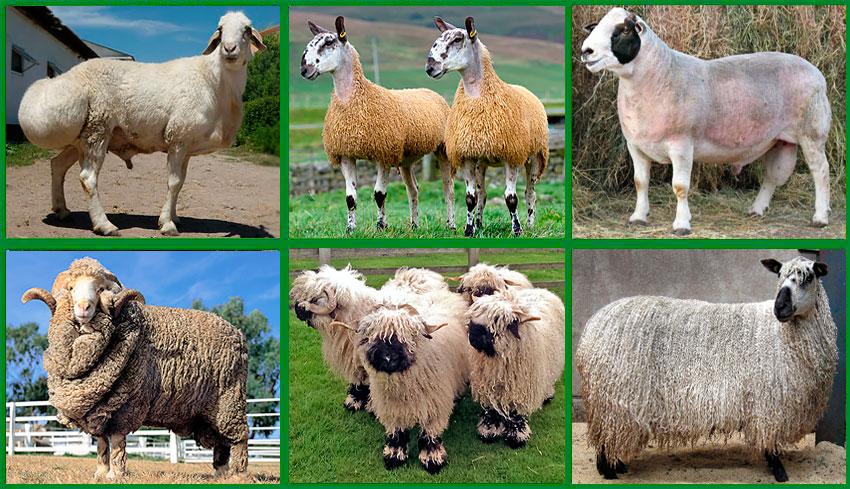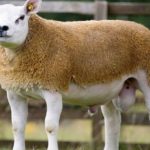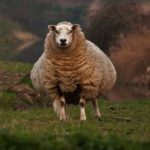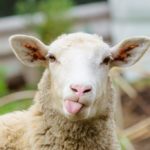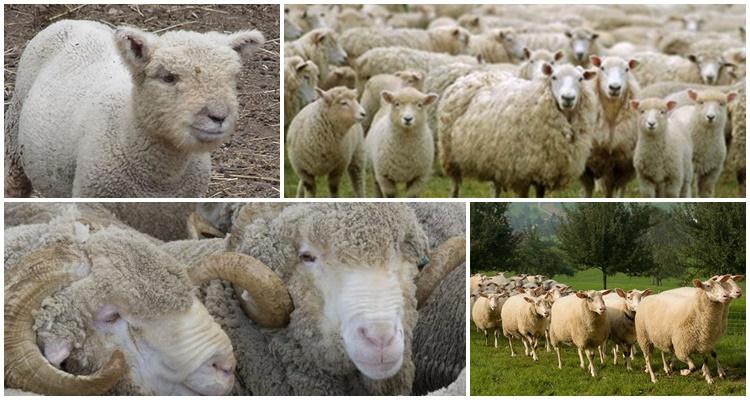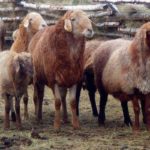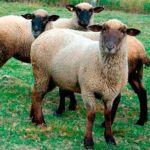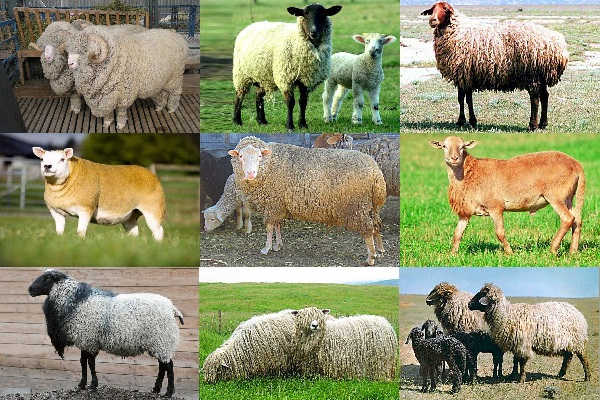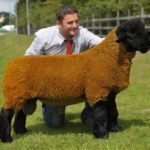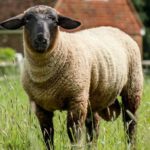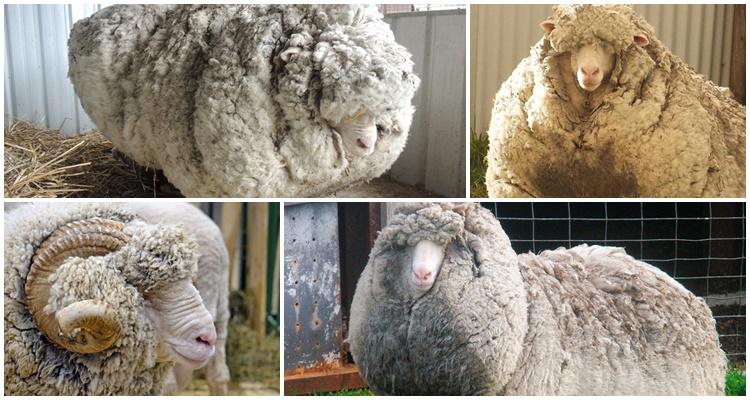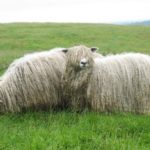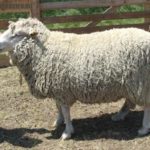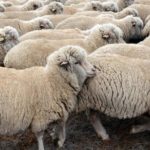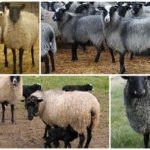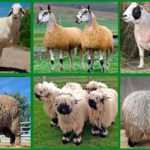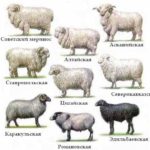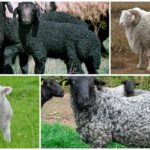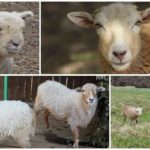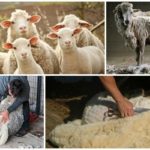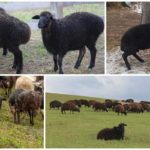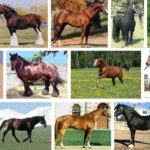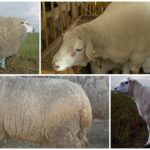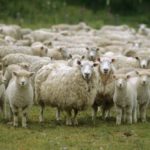In the early 20th century, sheep were bred for their wool and sheepskin. The meat of woolen breeds has a specific smell, so it is not in demand. But meat sheep, native to Great Britain and New Zealand, are not smelly. Through selection, domestic species resistant to harsh climates were developed. They quickly reach maturity and gain weight. The product can be sold for sale within 6-8 months after the birth of the lamb.
Features and characteristics of meat breeds
Sheep that produce meat are distinguished by their large build:
- wide chest;
- rounded sides;
- strong legs;
- relief muscles;
- thin skin.
Meat breeds have long and short hair. Horns are present in males, but are rare in females. Rams are superior to sheep in weight, height and body length. Types of meat breeds:
- greasy or fat tail;
- meat and dairy;
- meat and wool;
- Smushkovye
The main feature of animals is rapid weight gain. At 4 months, lambs reach half the weight of an adult ram. Males weigh 110 kilograms. Sheep reach a weight of 60 kg.
Domestic meat breeds
General characteristics of Russian varieties:
- 58 percent of the carcass weight is meat for sale;
- weight of lambs at 4 months is 20-40 kilograms;
- often belong to mixed sectors of agriculture.
Among domestic breeds, most belong to the meat and dairy and meat and wool industries.
Most Popular:
- Romanovskaya - polled variety is distinguished by a humpbacked profile and high fertility. One female gives birth to three lambs within two years. The weight of adult males is 100 kilograms, and females - 50 kilograms;
- Kuibyshevskaya is a variety adapted to the Russian climate with English roots. The body of sheep is covered with thick wavy wool. Animals are resistant to high humidity and have strong immunity to fungal diseases;
- Katumskaya — the short-haired, hornless variety gains weight faster than other varieties. The meat is juicy;
- southern - bred through selection, has genes of the North Caucasian breed. The litter contains 1-2 lambs;
- Gorkovskaya - sheep with a barrel-shaped body and a short muzzle, in addition to meat, produce a lot of milk. From one female you can get 150 liters per year;
- North Caucasian - the variety is distinguished by good meatiness and valuable wool, adapted to life in a harsh climate. Animals have rudimentary horns;
- West Siberian - appeared as a result of crossing Kuban and Siberian sheep, productivity is 10% higher than that of other domestic breeds.
Beef sheep varieties raised in Russia are resistant to temperature changes and produce juicy, odorless meat.
Foreign varieties
General features of breeds grown in foreign countries:
- weight of adult animals - 65-130 kilograms;
- weight of lambs at 4-5 months is 35-60 kilograms;
- They have an unusual exterior.
Popular foreign species for breeding on the farm and in private households:
- texel - a heavy breed, known since the 19th century. The meat turns out juicy and tender, despite the unpretentiousness in nutrition;
- prekos - a French variety of meat sheep. The young reach the weight of adult females;
- Barbados Black-bellied - an exotic polled variety that has selectively bred American relatives with horns. The animals are distinguished by short hair and an unusual color - red sides with a black stripe on the belly and hooves;
- dorper - To develop the South African variety, the Tallow Persian and Dorset Horned breeds were crossed. From the Persians, Dorpers inherited the black coloration on the head and neck. Their body is white;
- Wiltshire Horned - British sheep without thick wool. Their skin is covered with hard hair, similar to horsehair. The heads of males are decorated with rounded horns curved downwards.
The highly productive meat-and-wool species include the Vendean, a French breed that is bred to produce marbled meat. The carcass consists of 80 percent pulp. One individual also produces up to five kilograms of wool per year.
Breeds from neighboring countries
Average weight of sheep in kilograms:
- males - 90-190;
- females - 75-120;
- lambs at 4 months - 40.
The species that are bred in Tajikistan, Uzbekistan and Turkmenistan are classified as meat and wool. But there are also hairless sheep.
The main breeds of the neighboring countries:
- Saradzhinskaya - often white, rarely black. Sheep provide lard and milk. Carpets are made from the wool of Sarajin sheep;
- Tajik - has thick long hair, which is valued for its strength;
- Gissar - distinguished by a heavy body without hair and long thin legs. Low fertility is compensated by a large amount of milk in females;
- edilbaevskaya - bred in Kazakhstan, unpretentious in feeding. Lambs are ready for slaughter at 5 months;
- Jaidara is a meat-greasy variety with coarse hair. The peculiarity of the exterior is an elongated body on short legs;
- Kalmyk — valuable meat is obtained from young animals. The meat of mature individuals acquires a specific smell. The Kalmyk variety is hardy and can be kept on pasture all year round.
Central Asian species build up fat and gain weight even with poor nutrition.
The largest breed in the world
Fat-tailed sheep, common in Central Asia, are large in size. For fat deposits in their body there is a special bag - fat tail. Animals survive with poor nutrition thanks to the reserves of substances deposited in the fat tail. The fat sac is located at the back and reaches a weight of 30 kilograms.
Large breeds include Gissar, Edilbaevskaya and Kalmyk sheep. The largest variety is Suffolk. It is recognizable due to the black fur on its legs and head. The fur on the body is white or golden.
Large, productive and prolific varieties are Romanovskaya and Finnish Landrace. Romanovka sheep weigh 100 kilograms and produce 2-5 lambs per lambing. Finnish Landraces weigh 85-100 kilograms and produce 3-4 lambs twice a year.
Which sheep is better to choose?
Meat breeds for industrial or home breeding are selected based on the weight and fertility of the animals. The indicators of popular domestic and foreign species can be compared in the following table:
| Breed | Weight (kilograms) | Fertility (percentage) |
| Gissarskaya | 80-140 | 120 |
| Kuibyshevskaya | 65-110 | 130 |
| Prekos | 70-120 | 150 |
| Romanovskaya | 65-110 | 270 |
| North Caucasian | 60-100 | 140 |
| Edilbaevskaya | 75-120 | 120 |
Experienced farmers call the Romanov breed universal and easy to care for. The domestic variety is suitable for breeding for meat for personal needs, as well as for milking. Romanov sheep are sold in local nurseries.
It is often possible to buy a purebred foreign sheep only in a foreign nursery. Transportation costs will be added to the purchase price. Animals will need time to adapt after long transportation.
Therefore, for personal needs, it is better to choose a domestic variety from a local nursery.
Advantages and disadvantages of meat breeds
Breeding sheep for meat for your own needs and for sale is profitable due to the following advantages:
- omnivory - herbivores feed on fresh herbs, tuberous vegetables, cereals and legumes. In the absence of fresh feed, they eat silage, haylage and compound feed;
- endurance - domestic and foreign breeds tolerate cold and heat well;
- strong immunity - meat sheep are resistant to infectious and fungal diseases;
- high productivity - milk, lard, and wool are produced in large quantities.
Meat-producing breeds can be kept on pasture all year round. They are distinguished by high survival rate of young animals.
Flaws:
- it is impossible to feed adult animals to a record weight in a short time - weight gain decreases in adulthood;
- the meat of old individuals acquires a greasy lamb taste and smell.
Experienced farmers do not fatten livestock older than ten months in order to rationally use feed and produce high-quality products.
Subtleties of content
Before purchasing, a place for the sheep is selected and prepared. Small cattle are kept in two ways:
- stall-pasture - animals spend most of their time in the barn and go for a walk in an open paddock;
- pasture-stall - sheep live on a pasture in the open air, coming indoors only in bad weather.
Free grazing is preferable, since the cattle are in the fresh air and eat natural food. Meat from sheep kept on pastures is valued higher as an environmentally friendly product. But you need to monitor the herd and carefully choose the area for grazing.
Poisonous grasses are found in natural pastures. Safe places for grazing are steppe, dry land or foothills. Green mass in natural areas is consumed by 60 percent. To increase consumption to ninety percent and ensure the safety of animals, land plots are specially sown.
If there is no suitable area nearby, you need to equip a shed for the sheep and keep the stalls clean. The diet of beef sheep consists of fresh grass or silage, cereal concentrates and vegetables. Cattle are fattened for slaughter for up to six to ten months. Food feeders should always be filled. Animals also require plenty of fluids. Sheep with long, thick wool are sheared 1-2 times a year and their hooves are taken care of. When kept in stalls, they do not have time to wear out and also require pruning once every 3 months.

